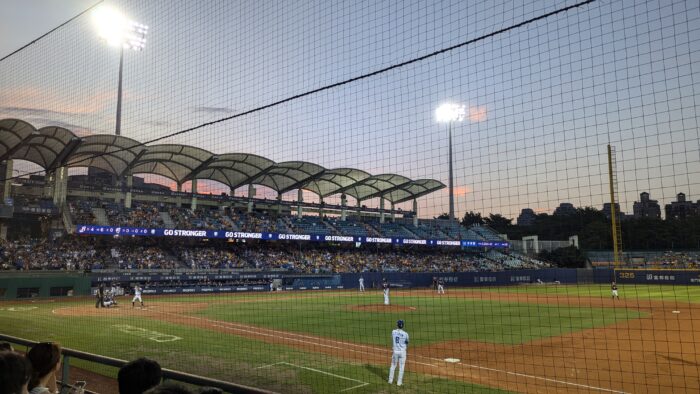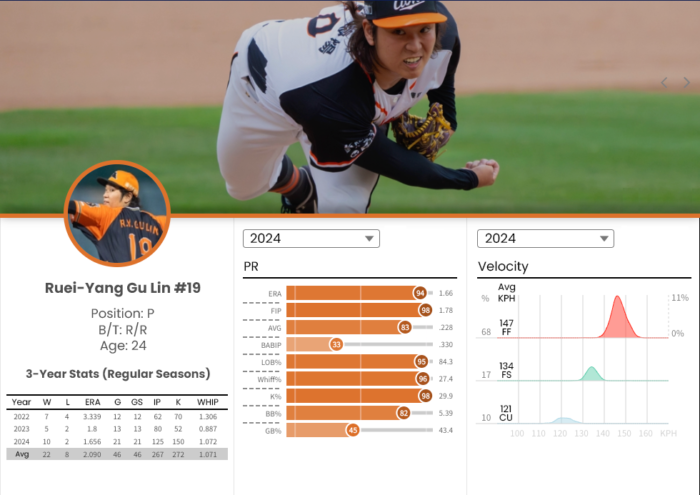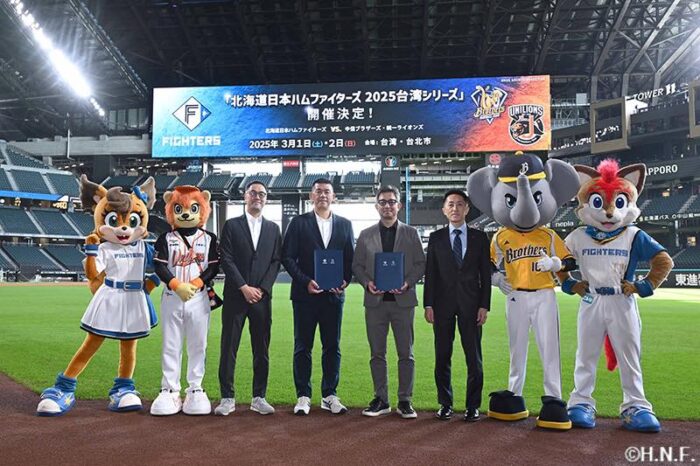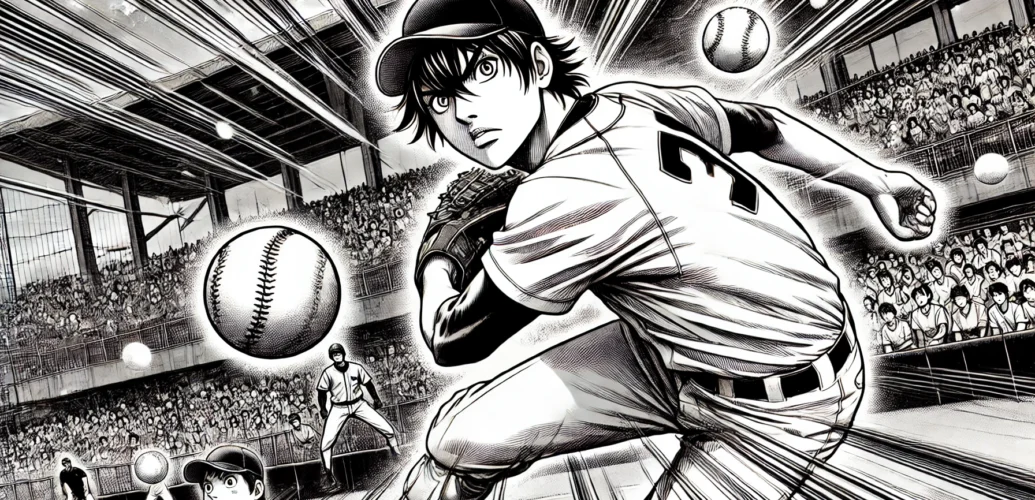For those who don’t know, I’m a huge baseball fan. My dad was an amateur softball player, and baseball was the first sport I played in my childhood under his influence.
This is my first post (and likely the last? Who knows!) about a player in CPBL, the only professional baseball league in Taiwan.

Overview of CPBL
CPBL, short for Chinese Professional Baseball League, is Taiwan’s only professional baseball league. There are six teams in the league:
- Uni-President 7-Eleven Lions
- CTBC Brothers
- TSG Hawks
- Wei Chuan Dragons
- Fubon Guardians
- Rakuten Monkeys
It’s the same as MLB, but in Taiwan. Unlike MLB, there is only one minor league (二軍).
The league is famous for its cheerleading with music and dance. If you watch any 2023 WBC highlights for Taiwan (aka Chinese Taipei), you will probably find some comments about its cheerleading culture like the ones shown below.

I’m obviously biased, but the competition level for CPBL is around the AA level, while elite players are at the AAA level. Some haters say it’s between A+ and AA. Either way, the only player who has ever jumped from CPBL to MLB is Fu-Te Ni (倪福德), a lefty sidearmer with an unusual delivery who played for the Detroit Tigers from 2009 to 2012 with a career ERA of 4.33. Below is a video of him pitching against the Boston Red Sox in 2009:
Here are some prominent active players in the league in 2024:
- Yu Chang (張育成):
Yu Chang was a righty hitter and a utility player with the Cleveland Guardians from 2019 to 2021 and the Boston Red Sox in 2023. He was named WBC 2023 Pool A’s MVP. He’s now with the Fubon Guardians. - Wei-Chung Wang (王維中):
Wei-Chung Wang is a lefty pitcher with the Wei Chuan Dragons. He’s the first Taiwanese player to play in KBO League of South Korea. Before joining the Dragons, he pitched for the Milwaukee Brewers in 2014 and 2017 and both the Oakland Athletics and the Pittsburgh Pirates in 2019. - Kuan-yu Chen (陳冠宇):
Kuan-yu Chen is a lefty pitcher now with the Rakuten Monkeys. Prior to joining the Monkeys, he played in NPB for Yokohama DeNA (2014) and Chiba Lotte Marines (2015~2019).
Who is Ruei-Yang Gu Lin
Now, let’s talk about our protagonist today.
Ruei-Yang Gu Lin was born in June 2000. He is a righty flamethrower in the Uni-President 7-Eleven Lions of CPBL and nicknamed “Tainan’s Golden Grandson” (府城金孫).
His arsenal includes:
- Up to 98 mph (157 kmh) four-seamer,
- Average 83 mph (134 kmh) max forkball/splitter, and
- Average 76 mph (~121 kmh) curve ball.
In the 2024 season, Gu Lin led the league in ERA with a 1.66 ERA and had 10.8 strikeouts per 9 innings (the highest among pitchers with over 100 innings this season). He won the league’s MVP of the year award in 2024, and his ERA was second-best among all domestic starting pitchers in the league’s history – third-best if you include foreign ones.
The following image shows how dominant he is compared to other pitchers in the league.

Some of you might be thinking, “Well, if he’s this good, why isn’t he in the (major) league?“ Fair enough. I believe the primary reason scouts in the MLB didn’t offer him a contract after graduating from high school was his history of injury. The Lions swooped in and drafted him in the first round in 2018.
Gu Lin didn’t make it on the FanGraphs’ ranking for international players for some reason. However, Jo Hsi Hsu, another young flamethrower in the league with most of his stats slightly lower than Gu Lin’s, is on the list with a 40+ Future Value (FV). But what is FV, you might wonder? According to FanGraphs:
FV stands for Future Value, and it’s the way we distill each player’s scouting evaluation into a single expression. Broadly stated, Future Value is a grade on the 20-80 scale that maps to anticipated annual WAR production during the player’s first six years of service.
…
The 20-80 scale is used by scouts and team analysts to evaluate prospects’ individual tools, as well as their entire future projection. The center of the scale (50) represents major-league average with each whole grade away from 50 representing a standard deviation away from it.
In other words, Jo Hsi Hsu, our weaker but closest approximation of Gu Lin, could be a below-average major-league player, according to the famous baseball analytics site.
But how good is he when facing international players in real life? Let’s check Gu Lin’s stats during the Asian Games and Asia Professional Baseball Championship in 2023.
Asian Games (2023)
The Asian Games, also known as Asiad, is a continental multi-sport event held every four years for Asian athletes.
Gu Lin pitched against China and Korea for 4 combined innings and struck out 7 batters without giving out any runs. Here is a highlight when pitching against the Korean team (with Liu Chih-jung in Boston Red Sox’s AA team as the closer):
It’s worth noting that the Korean team’s head coach said they aimed to train the younger generation in this tournament. As such, most of the Korean team’s players are under 25 years old or have joined the professional league in less than four years.
Asia Professional Baseball Championship (2023)
The Asia Professional Baseball Championship (APBC) is an international baseball tournament co-organized by the CPBL, the KBO, the ABL, and the NPB. In 2023, four teams, including Taiwan, South Korea, Australia, and Japan, participated in the tournaments. Players who join the tournament must be active in the presenting league and under 24 years old or have joined the professional league in less than 3 years.
Gu Lin started against Japan and faced a lineup of younger talents from NPB. He allowed 3 hits and only 1 run in 6.2 innings without any walks.
In conclusion, this kid is good, no doubt.
As a side note, Gu Lin didn’t participate in the World Baseball Classic in 2023 due to shoulder discomfort and will not join WBSC Premier 12 in November 2024 due to back muscle strain.
Why NPB
When a player has a dominant performance in Taiwan and is eligible to be a free agent for foreign clubs, his agent will usually check with teams in two leagues:
- NPB in Japan and
- MLB in the US
There are a couple of reasons why most of the top CPBL players chose NPB in the end:
- Lower competition level versus the MLB.
- Fewer timezone differences to Taiwan.
- Closer to Taiwan geographically.
- Less travel time between ballparks.
- Less cultural and dietary differences.
- Higher salary vs AAA in the minor league.
- More CPBL players have already played in the NPB.
That said, this is not saying NPB is easy for top CPBL players; it is quite the opposite.
Let’s take Po-jung Wang, the lefty slugger now with the TSG Hawks of CPBL, as an example. My dude was a beast in CPBL in the 2017 season, where he was the Triple Crown winner and had the most hits. Hokkaido Nippon-Ham Fighters of NPB posted him after that season.
With stats like that, you would expect he would be a decent hitter in a new league. But here are his five-year career stats in NPB:
- Games: 270
- Hits: 169
- Avg: 0.235
- Homeruns: 15
- RBI: 97
In summary, Po-jung Wang was a slightly below-league-average hitter in Japan with limited plate appearances and – sadly to say this – a waste of money as a foreign player.
Update: On November 12, 2024, one month after this article was published, Hokkaido Nippon-Ham Fighters has been confirmed as the highest bidder for Gu Lin, defeating the likes of Yokohama DeNA Baystars and Yomiuri Giants. They will negotiate with Gu Lin’s agent for his contract and release fees in 30 days .
For Ruei-Yang Gu Lin, people (or at least me) are confident he would join Hokkaido Nippon-Ham Fighters. The main reason is that Nobuhisa Igawa, the president of the NPB team, visited the Lions’ management team during his business trip to Taiwan.
Another clue is that the Lions will play one of the exhibition games with the Hokkaido-based team next year in Taipei Dome. If you don’t understand CPBL, you don’t know how unusual this is. The Lions have the least seats sold for their home game in the league. On average, 5,324 people attend the Lions’ home game. So the only possible reason an NPB team wants to play with the least popular team in the largest stadium in Taiwan must be that they’ll sign their best pitcher, and he will be the starting pitcher against his former teammates.

One thing worth pointing out is that one main reason why the Lions have the lowest number of tickets sold per game might be attributed to how old its home stadium is. Tainan Municipal Baseball Stadium, the Lions’ home, was built in 1931 when Imperial Japan still ruled Taiwan. As such, the seats stand at 12000, and there is (almost) no place to sell food/drinks in the venue. To buy anything, you must go out of the ballpark and buy from the outside food trucks (see video below). I do love the Lions, though. They’re the only founding team (of the league) left, and I hope they’re here to stay.
How Good Could He Be
The following is based on the assumption that Gu Lin won’t get hurt in the next year. The data source for this and the next section comes from 1point02.
Simulation 1: Replicating His PRs in CPBL
If I used the percentile rankings for ERA, SO, and BB per 9 innings from Gu Lin in CPBL to find the closest equivalent among the pitchers with over 90 innings in NPB, that person would be….
Tomoyuki Sugano (菅野智之) of Yomiuri Giants.
Tomoyuki Sugano’s arsenal includes an average of 92 mph four seamers, an 82 mph slider, an 87 mph cutter, and curveball and forkball. Here are his stats this year:
- Games: 24
- W: 15 (first in the entire league!)
- ERA: 1.67 (second in the entire league!)
- IP: 156 2/3
- SO: 111
- BB: 16
Ah fuck.
This dude is so good this season that there have been rumors (in years!) that he’ll be posted by an MLB team. There is no way Gu Lin can be this good in his first year in NPB. (I hope I’m wrong about this, though.)
Simulation 2: Po-jung Wang as a Reference
How about I use Po-jung Wang’s (if you forgot who this is, please check the breakout section in the Why NPB above) career batting average in Taiwan, divides that in Japan, and use that as a multiplier to reduce the percentile rankings for Gu Lin and see who will be the closest pitcher in NPB?
Okay, let’s do this.
Before Wang’s departure to Japan, here is his four-year monstrous career stats:
- Hits: 573
- Avg: 0.386
- Homeruns: 86
- RBI: 319
So Wang’s avg deteriorates by a whopping 40% moving from CPBL to NPB. If we apply this to Gu Lin’s PR, this will give us:
Tomochiro Sumida (隅⽥知⼀郎) of Chiba Lotte Marines.
He’s average or above average among the pitchers with over 90 innings in most key metrics:
- His ERA is exactly at the median.
- His BB/9 is better than average, showing good control.
- He’s pitched more innings (fourth in the league!) than average, indicating durability and reliability.
- He has more complete games and shutouts than many others on the list.
Sheesh. Besides the obvious fact that he’s lefty, I doubt he would be a suitable template for Gu Lin, as Gu Lin has never pitched over 150 IPs in a season and has never pitched a complete game.
Simulation 3: Using Pitch Types
How about we use the pitch types to find the closest pitcher?
In this case, we’ve got:
Hiroto Saiki (才⽊浩⼈) of Hanshin Tigers
Here is the pitch type breakdown for him:
- FA%: 50.2% (diff: 17.8%) with an avg 148.5 kmh
- SF%: 19.9% (diff: 2.9%) with an avg 135.7 kmh
- CB%: 6.4% (diff: 3.6%) with an avg 110.3 kmh
- Total diff: 24.3%
Wow. Saiki does look like Gu Lin in terms of delivery, pitch types, velocity, and even age (25 years old)! I guess we have a winner for the simulation!
Here are Saiki’s stats this season:
- Games: 25
- W: 13
- ERA: 1.83
- IP: 167 2/3
- SO: 137
- BB: 38
Update: On November 16, 2024, Hiroto Saiki was the starting pitcher for Japan against Taiwan during WBSC Premier12. In an off-game interview, Song-En Tseng, a lefty slugger from Team Taiwan, mentioned that Saiki is similar to our main character for this article in terms of his repertoire, except that “Saiki is taller and has a better four-seam fastball.”
Final Words
No matter how good a player is, he must adapt to a new league to survive. Here are some improvements that Gu Lin can make if he wants to be competitive in NPB:
Add More Breaking Balls
Among the NPB pitchers who have pitched over 90 innings, they all have more than 4 pitches in their arsenal. Yes, even as someone as powerful as Roki Sasaki, whose average four seamers stands at 156 kph, he still needs three other breaking balls to cover his fastball. Some of them even have 8 pitches.
Increase His Stamina
Gu Lin usually pitches around 5~6 innings per game in CPBL. However, the pitchers who have pitched over 90 innings usually pitch around 6.57 innings per game. Our Taiwanese kid needs to be stronger to meet the status quo.
Don’t Get Hurt
As a foreign player, you will be replaced if you get hurt. Gu Lin has a history of injury, so it will be crucial for him to stay healthy.
Alright, that’s all we’ve got here today!
Wow! Initially, I didn’t expect this article to be this long, but writing it was pretty rewarding. Claude is a godsend when analyzing the data for this article—I just fed it the data and told it the conditions/requirements, and then it just gave me the closest player, saving me lots of time.
